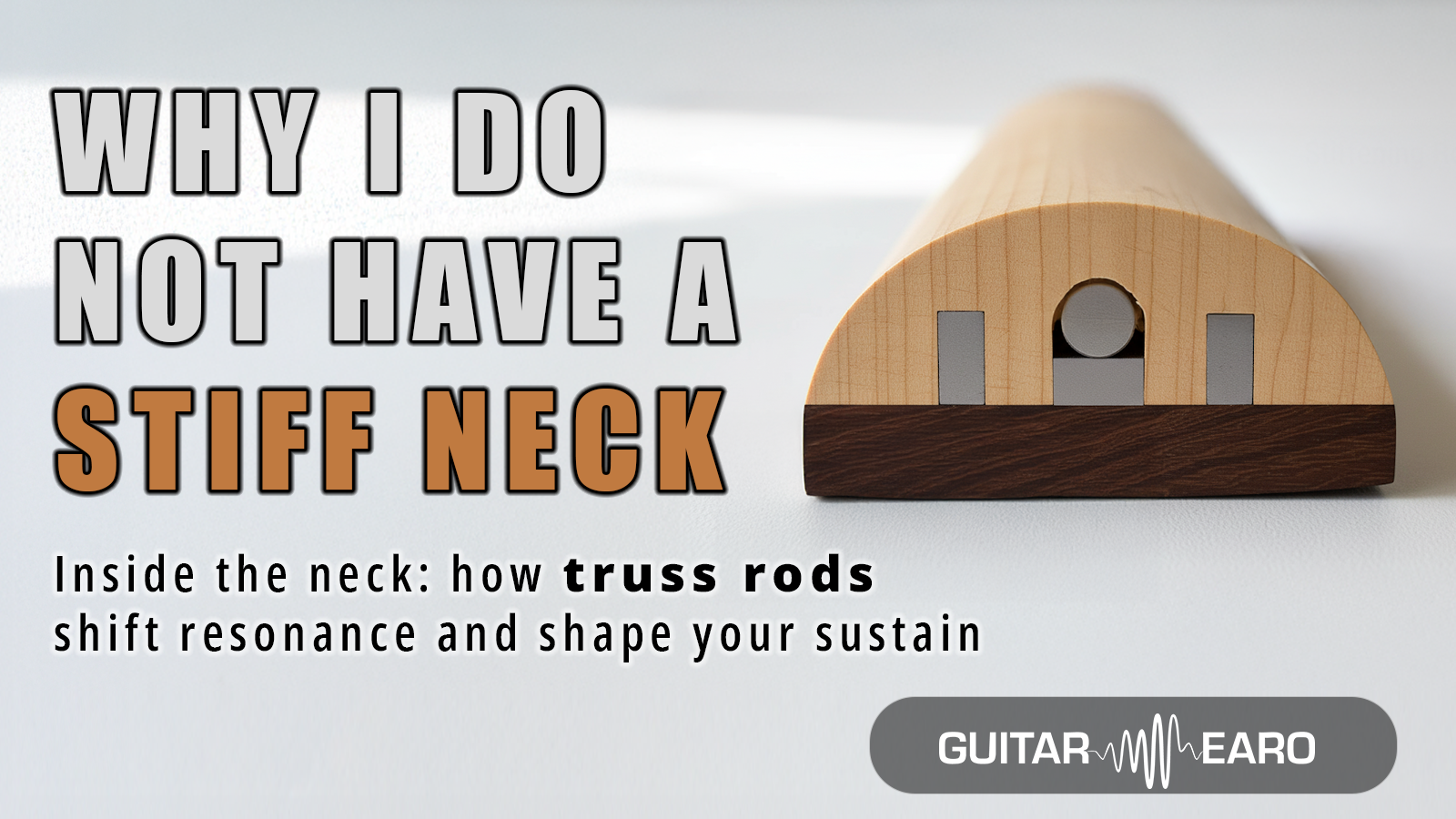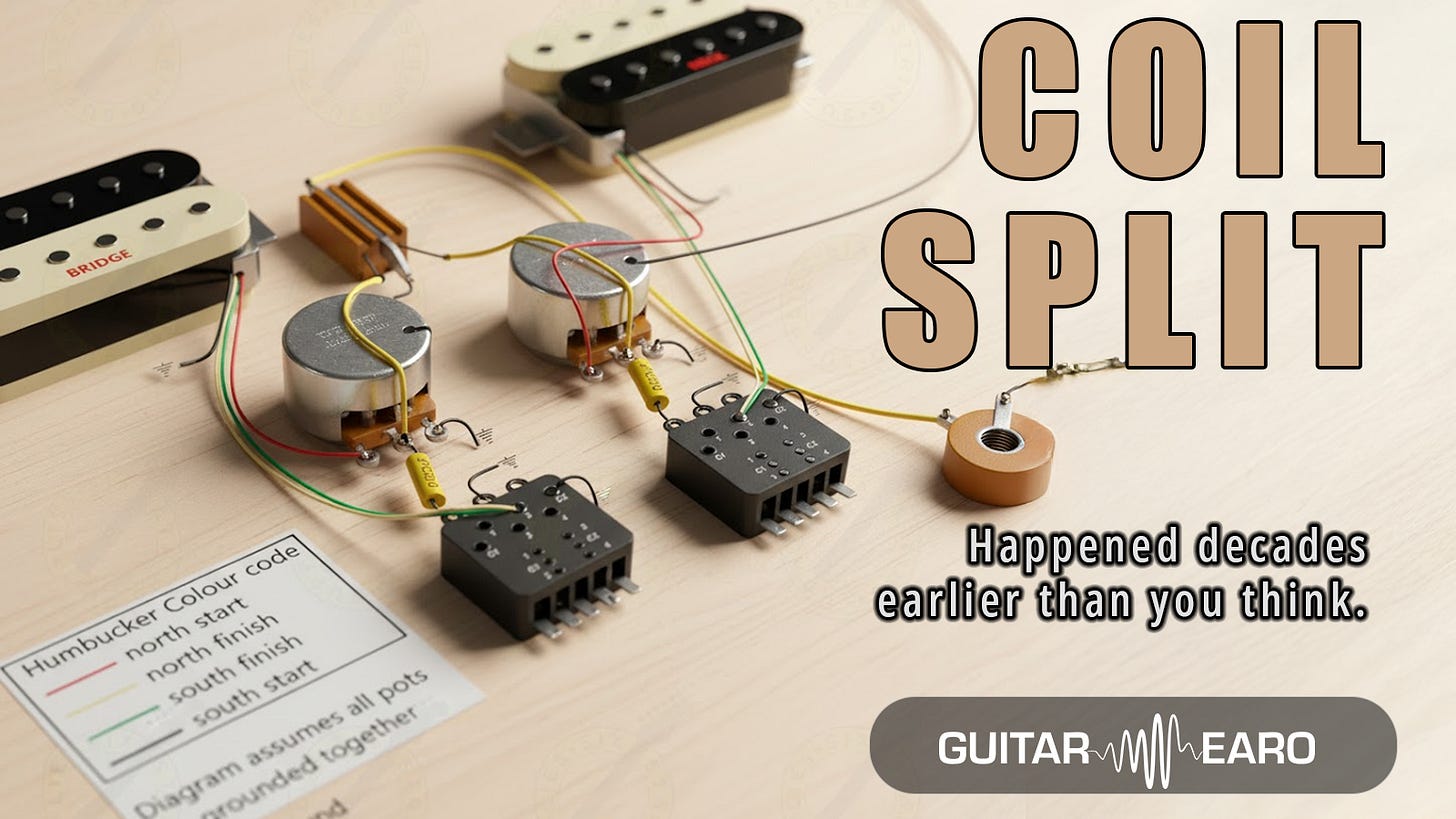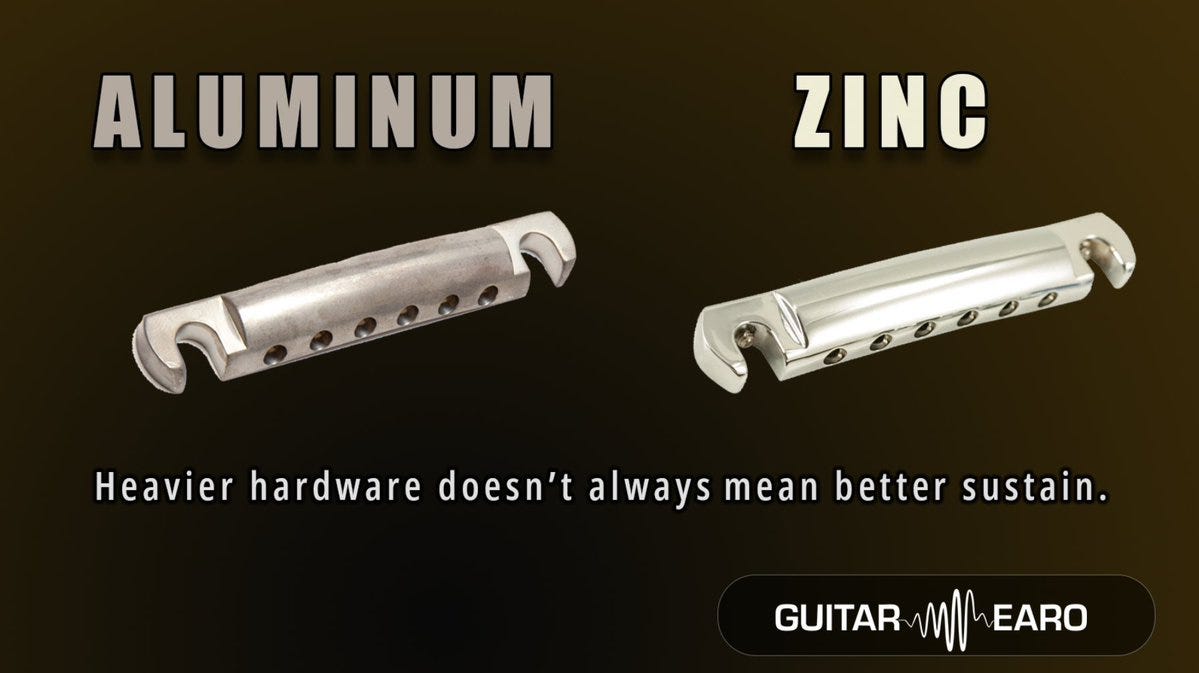Every guitarist has hit that note that dies faster than the rest: the cursed dead spot. You hit a C♯ on your G string and instead of singing, it coughs and disappears. That isn’t magic or bad luck.
It’s physics.
The culprit lives inside your neck.
The Neck as an Energy Sink
The neck is not just a piece of wood holding frets in place. It’s an active mechanical resonator coupled to the strings. When you pluck a string, energy travels through the nut and frets into the neck, which vibrates sympathetically.
If the neck’s natural bending resonance aligns with a note you’re playing, it siphons off string energy at that frequency.
That’s your dead spot: the string’s vibration and the neck’s flex motion are “out of phase” and cancel each other.
This is most notorious on basses, where a 34″-scale maple neck typically resonates around C♯₄ (277 Hz), robbing <a href="do-heavier-guitars-actually-sustain.html">sustain</a> from that pitch.
But it happens on guitars too, just at higher frequencies, often unnoticed unless you know what to listen for.
The Physics of Stiffness
Neck stiffness is governed by Young’s Modulus (E) and the cross-sectional geometry of the neck (moment of inertia, I).
The bending frequency of the neck is roughly proportional to √(E·I / ρ·A), where ρ is density and A is cross-section area.
What that means in plain English:
Thicker neck → larger I → higher resonance frequency.
Stiffer material (carbon vs maple) → higher E → higher resonance frequency.
Heavier neck → lower resonance frequency (mass dominates).
Increase stiffness enough and you move the resonant dead spot upward, ideally away from the range of played notes.
Measured Changes: Numbers Don’t Lie
In controlled tests, installing carbon-fibre reinforcement rods increases a typical maple neck’s bending stiffness by 30–50% and torsional rigidity by 50–70%.
The fundamental bending resonance can jump from around 200 Hz to 250–270 Hz, and internal damping drops by 10–20% (measured via logarithmic decrement).
That may sound small, but the audible effect isn’t.
You gain up to 1–2 seconds of additional <a href="do-heavier-guitars-actually-sustain.html">sustain</a> on notes that previously decayed quickly.
More importantly, the tone evens out, with fewer “wolf” notes that modulate strangely, and a more predictable envelope across the fretboard.
The carbon doesn’t add energy; it simply wastes less of it. The neck flexes less, so the string keeps vibrating longer.
Dual Truss Rods: Beyond Adjustability
Many modern basses and some guitars use dual truss rods, not just for alignment control, but to symmetrically stiffen the neck.
Two steel rods increase both bending and torsional rigidity, making the neck resist twisting under string load (especially on wide fingerboards).
It’s the same reason carbon D-tubes and graphite spars are popular in boutique builds: they stabilize tuning and minimize phase cancellation between string and neck modes.
A dual-rod system is effectively a mechanical equalizer, tuning the neck’s resonant spectrum.
The Trade-Off: Clarity vs. Character
But stiffness is not free.
Push it too far and you lose the organic “give” that players associate with a lively neck.
Graphite or all-carbon necks, like those from Modulus or Status, have near-zero damping and extremely high resonance frequencies.
The result?
Spectacular clarity.
Infinite <a href="do-heavier-guitars-actually-sustain.html">sustain</a>.
But a tonal profile some call “sterile” or “clinical.”
Traditionalists argue that a bit of flex (that microinteraction between string and wood) gives the note its warmth and bloom.
It’s the same reason some luthiers prefer quartersawn maple over carbon reinforcement: slightly lower stiffness, slightly higher damping, slightly more life.
The Perception Gap
Here’s why the debate never ends:
If you’ve never experienced a severe dead spot, reinforcement seems unnecessary.
If you’ve owned a bass or guitar with a vanishing note at the fifth fret, carbon rods feel like a miracle.
And yet the improvement is mostly defined by absence: the absence of weird resonances, the absence of dying notes.
When something sounds “normal,” you don’t notice the engineering that made it so.
So… Should You Stiffen Yours?
If your instrument has an obvious dead spot or uneven <a href="do-heavier-guitars-actually-sustain.html">sustain</a> then yes.
Carbon rods or a dual truss-rod retrofit can work wonders.
If your guitar already feels balanced and alive… maybe not.
You might end up trading a little warmth for a little precision.
The sweet spot lies in the controlled stiffness zone: enough rigidity to banish dead notes, but not so much that your tone becomes glassy and lifeless.
The Takeaway
Tone is a balancing act between energy retention and energy character.
Stiffen the neck, and you retain more.
Leave it flexible, and you colour it more.
There is no universal “better,” only a spectrum of compromise, from the buttery resonance of an old maple neck to the clinical <a href="do-heavier-guitars-actually-sustain.html">sustain</a> of a carbon monolith.
In the end, your “perfect neck” might flex just enough to remind you it’s alive.
Learn the Tone,
Save the Sound.




